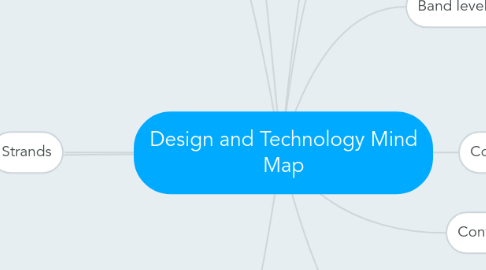
1. Knowledge, understanding and skills in each subject are presented through two related strands:
1.1. Knowledge and understanding
1.1.1. Technologies and society the use, development and impact of technologies in people’s lives Technologies contexts •technologies and design across a range of technologies contexts
1.1.2. Digital systems •the components of digital systems: hardware, software and networks and their use Representation of data •how data are represented and structured symbolically
1.2. Processes and production skills
1.2.1. Creating designed solutions by: •investigating •generating •producing •evaluating •collaborating and managing
1.2.2. Collecting, managing and analysing data Creating digital solutions by: •defining •designing •implementing •evaluating •collaborating and managing
2. Student diversity
2.1. Student with disabilities
2.1.1. Students with disabilities are now able to achieve the same standards in consideration with the necessary adjustments to the way in which they are taught and how they demonstrate their learning.
2.1.2. The way in which the lessons are conducted need to ensure those with physical disabilities can participate and achieve on the same basis as their peers.
2.1.2.1. This might involve students using modified tools, materials or equipment to create solutions.
2.2. EAL/EAD
2.2.1. EAL/D learners enter school at various ages and stages of learning English.
2.2.2. While many EAL/D students bring already highly developed literacy (and numeracy) skills in their own language to their learning of Standard Australian English, there are a significant number of students who are not literate in their first language, and have had little or no formal schooling.
2.2.3. The aims of technologies in the Australian Curriculum are the same for all students, however EAL/D learners must achieve these standards whilst also learning a new language and learning content.
2.2.3.1. These students may require additional time and support, along with teaching that explicitly addresses their language needs.
2.3. Gifted and talented students
2.3.1. Using the Australian Curriculum teachers are able to cater for individual learning needs for such students.
2.3.2. This can be done through learning in more depth, emphasising specific areas and focusing on cross-curriculum priorities.
3. Cross-Curriculum Priorities
3.1. Aboriginal and Torres Strait Islander histories and cultures
3.1.1. Students identify and explore the understandings and knowledge of technology used by the Aboriginal and Torres Strait Islander Peoples in past, present and future applications along with understanding that technologies of the world’s first and most continuous culture often develop through knowledge of country and culture.
3.1.2. Students explore the links between Aboriginal and Torres Strait Islander People and the environments, histories, cultures and identities and use it within Design and Technology and Digital Technology to create products.
3.2. Asia and Australia’s engagement with Asia
3.2.1. Students explore various achievements throughout the countries of Asia. Students investigate the links between Australia and Asia and how Australia has contributed to the creation of products and services. Using this knowledge they create their own products using the same set of thinking, knowledge and understanding.
3.3. Sustainability
3.3.1. Using this area of the curriculum, when students identify a problem, they will generate ideas and concepts, create solutions and allow consideration to sustainability using economic, environmental and social impacts.
3.3.2. With consideration into resource depletion and climate change, this area of the curriculum narrows down into the knowledge, understanding and skills necessary to design actions that are effective towards sustainability.
4. Key Ideas
4.1. Project management
4.1.1. Students will develop skills to manage projects to successful completion through planning, organising and monitoring timelines, activities and the use of resources.
4.2. Systems thinking
4.2.1. A holistic approach to the identification and solving of problems where the focal points are treated as components of a system.
4.3. Design thinking
4.3.1. Involves the use of strategies for understanding design needs and opportunities, visualising and generating creative and innovative ideas, planning, and analysing and evaluating those ideas that best meet the criteria for success.
4.4. Computational thinking
4.4.1. A problem-solving method that is applied to create solutions that can be implemented using digital technologies.
